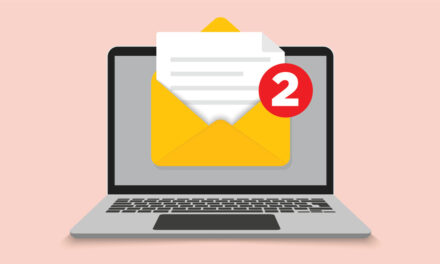Whether you’re with Hillary Clinton’s campaign or Donald Trump’s, it’s impossible to ignore the fact that the 2016 presidential race is a game-changer, in more ways than one. It’s not just because of the historic nature of the candidates–it’s about how these candidates are connecting with their audiences.
The 2016 United States Presidential campaign (and prior campaigns to a lesser extent) have shown how powerful email marketing can truly be. President Barack Obama was the first Presidential nominee to truly take advantage of the new digital age of technology. In 2008 it’s believed President Obama captured over 13.7 million unique emails for his targeted list, and it’s estimated he captured several million more prior to his 2012 campaign for re-election. The majority of the $690 million that the campaign raised online was driven by fundraising emails.
How was this accomplished?
The Obama campaign ran numerous tests of subject lines, drafts, and specific donation requests. These were also used to help the President get out the vote from his most dedicated supporters. The campaign staff knew what they were doing, tested aggressively, and emailed aggressively, with great success.
Which makes you wonder, with social media and the evolution of technology, why is email marketing so important to the elections? One reason is that email marketing strategies aren’t simply about sending email to inboxes anymore. A lot of factors have changed over the course of the past four years in the world of online advertising. According to Fluent, about 60% of all online interactions now take place on mobile devices, and non-existent support for cookies in mobile web browsers have given rise to email-based targeting of display ads across different channels and devices. Social media platforms also play a role — Facebook’s “Custom Audience” enable marketers to upload their email lists to Facebook, and then retarget those individuals and lookalikes with display ads, targeting individuals in new and exciting ways.
But the real question is how email marketing strategies are changing the campaigns? While it’s important to understand what email marketing does, it’s also important to learn why it can make or break this election.
It’s All About the Money and the Data
Email marketing is primarily used to raise money. Over half of candidate campaign emails (57%) focused primarily on donation. In fact, 59% of respondents who reported donating to Hillary Clinton’s campaign were persuaded to do so by email, compared to just 19% of Donald Trump supporters. During his campaign, Bernie Sanders saw tremendous results and raised huge amounts of fundraising dollars due to his email lists. He was able to break donation records as his grassroots campaign grabbed the hearts of millions of Americans. His treasured email lists were responsible for garnering hundreds of millions of dollars for the Sanders campaign – greatly defeating the online campaign efforts of any other candidate from either party.
Hillary Clinton’s campaign has been quick to adopt to new data-driven strategies. The campaign has posted job openings for digital, analytics, and engineering spheres, which include an email writer. Requirements included having previous knowledge and experience of mass distribution program familiarity with A/B testing, and optimizing content and headlines. Data-focused email campaign strategies have formed the core of Clinton’s campaign, allowing her to get ahead of her competition.
On the other hand, Donald Trump has done email marketing all wrong. Trump has prided himself on not sending fundraising emails throughout the entire campaign. This changed in June of 2016, when the campaign sent out its first fundraising request. The Trump email that helped the campaign generate $3.3 million didn’t bode well by accepted email measures. According to email tracking firm Return Path, the first-ever fundraising email sent by the campaign had a remarkably high spam rate and a very low open rate. Nearly 60% of those emails never reached inboxes, and were automatically being directed to recipients’ spam folders, according to Return Path. They also reported that just 12% of recipients opened the email and 6% deleted it without reading it. This fail was a huge setback for the campaign, and a key lesson for email marketers – always make sure that your domain is recognized, and not considered spam.
Why the 2016 Election Finally Embraced Online Ads
Another key differentiator is that more ad dollars are currently being spent online over any other channel, including TV. Until now, political advertisers have treated the Internet as a novelty. In 2008, digital accounted for $22 million of the $6.2 billion campaigns spent on advertising. Even two years ago, when digital marketers started to shift to online, political marketers held back, focusing on TV and radio ads.
This changed in 2016, when analysts, including Borrell Associates, predicted that election digital ad spending will break $1 billion dollars. This is a 5,000% increase from the 2008 presidential election, and a big reason why email marketing is making a big comeback.
Today, We Find Email is More Advanced
With the evolution of technology, digital marketers realize that email marketing is here to stay, meaning companies will invest money to make it better. The days of the one-size-fits-all “spray and pray” email campaigns are over. Today, personalization is key. Marketers need to utilize the tools they have on deck to target consumers with great precision at a massive scale. Individuals want to feel as if you truly understand them. Emails need to be personalized, they need to be tailored to each individual recipient, and communicate to them about the issues that they care about. Emails that do not relate to the individual will be trashed, or won’t even be opened. Campaigns need to go beyond the canned, mass email, and deliver email to “Jane” who is a Democrat (or Republican), has 3 children, believes in gun control, and is likely to support a candidate that she believes in.
How Does This Affect the Business Model?
No matter your political leanings or preferences, the shift to email marketing presents an effective model that can result in the eventual success or failure of your business as a whole. Donald Trump’s campaign has virtually no online campaign strategy for receiving donations from his supporters. Secretary Clinton struggles to receive donations from working and middle class individuals – in comparison to her former rival for the democratic nomination, Senator Sanders.
Just like political campaigns, brands have to diversify the way they attempt to reach their prospective audience. If your targeted audience is under the age of thirty, it is highly likely you will reach the majority of them through online outlets. Trends show Millenials are simply not watching cable. While, the same data shows you are likely to reach audiences specifically over the age of 50 through cable outlets.
Email marketing campaigns need to focus on two things: targeting key issues, and personalizing the content for each individual. Test out the subject lines, add a personal touch, like a name, and last, test your content.
While we’re close to the end, there is still a long way to go for the candidates (and all of us). But I believe that the candidate with the best email campaign is going to have the best shot at winning the White House.
(Image courtesy of Shutterstock.)






